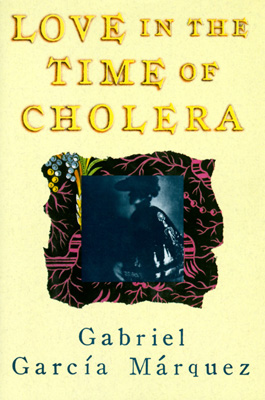Friday, November 20, 2009
Homemaking with Fossil Book
The house began making decisions, displacing its lineage
Of concerned owners, just as the knowledge of them increases,
No trace of vertebral column has been found. Precepts without object.
Shaping the room with one renovation, where one prefers to live
Free soul among imported plating. Folding wings one over this increase,
Forward through the mud where one found the rightful fit of this plumbing.
As soon as the house awakened to realities, rugs lined the floors, to live.
The room had always beckoned, bone bed, with all but invisible stitching
Where a prehistoric sun scorched, sea level subsided or rose plumbing
All the while the house fossilized, a punctuated trail and back-borings.
Inhabitants baked on flats, their burrows dragged over by currents stitching
Together the scraps of an eminently erotic existence. Teeth set into
Slender jaws, setting out for spaces less jarring, depicted with back-boring
Among address numbers, fence posts, slate walks with the slugs emerging,
Shelterings that bore absolutely no defense against savage relatives set onto
Entering to inspect the lovely scenic views of the golf course in their heat-
Gathering fancies borne on weak forelimbs, useless legs, and hoofs emerging
Continuity over newness still seems to beat its wings in that history of nations,
Percolating out of the chalk age. There, Eurythion and lungfish fan their heat
So that it looks evolved over time, hidden in their flesh the whole organ of the house.
Subscribe to:
Post Comments (Atom)






9 comments:
http://www.bbc.co.uk/nature/wildfacts/factfiles/432.shtml
http://www.oceansofkansas.com/
One of my coworkers is a travel nurse, and her next assignment is Omaha, which pays well, always. We talked about wanting to go there, without the blanket of snow, to see what the Midwest is like.
https://outdoornebraska.gov/location/ashfall-fossil-beds/
Cornfields. No.
https://www.smithsonianmag.com/smart-news/methuselah-the-worlds-oldest-living-aquarium-fish-could-be-more-than-100-180982944/
https://www.nature.com/articles/s41586-021-03198-8#:~:text=The%20vast%20size%20of%20this,they%20do%20those%20of%20ray%2D
The coelocanth has been treated. The lungfish's body plan of the tetrapod is in progress.
https://www.uni-wuerzburg.de/en/news-and-events/news/detail/news/the-worlds-largest-animal-genome/
https://www.google.com/books/edition/The_Pelagic_Dictionary_of_Natural_Histor/5STMDwAAQBAJ?hl=en&gbpv=1&dq=crystalwort&pg=PT694&printsec=frontcover
"It is in the Permian that amniotes have begun to take over the land. The relative drought, or at least the extreme seasonality, of this period is a new phenomenon. During the Carboniferous, a group of amphibious animals had evolved a clever anatomy for their eggs. Being descended from aquatic fish, their eggs, like those of their ancestors, had the same basic salty chemistry of the sea. The proteins involved in the development and DNA replication are adapted to work in a watery environment, and cannot function while desiccated. Although amphibians can leave the water, they cannot survive their early life without standing water. Amniota is the name given to the descendants of the species that first solved this problem by sealing off each egg, surrounding it with a series of membranes: a shell for physical protection; the amnion and the chorion, two layers of protective sacs, in which the embryo develops, and finally, the allantois, which acts as a form of embryonic lung, bringing oxygen from the porous shell to the embryo so that it can continue to respire, and functions as a repository for the waste products of that respiration. These protective membranes maintain the internal chemistry of the egg as it develops, even in entirely dry environments.
[...]
The amnion is familiar to us as the container of 'waters' that break during human labour, the miniature ocean each of us creates to protect ourselves as we develop. The chorion and the allantois have joined forces to produce similar placenta. We still carry around remnants of our ancient ecological traits. Our cells are unable to break the constraints of our most fundamental chemistry, and our bodies bear the legacy of the developmental loophole that allowed our ancestors to move onto land (176-8)."
Thomas Halliday's Otherlands: A Journey Through Earth's Extinct Worlds (2022)
https://www.sciencedirect.com/science/article/abs/pii/S0006899315007027#:~:text=Myelin%20was%20acquired%20425MYR%20ago,of%20glial%20cells%20around%20axons.
Halliday is wearing a Dale of Norway sweater. I did not get to wear mine much this past winter, worm for jarring color, pattern and weft against wind.
https://www.theguardian.com/books/2023/jan/28/otherlands-author-thomas-halliday-some-people-have-insisted-on-reading-the-book-backwards
https://www.produits-scandinaves.com/en/sweaters-dale-of-norway/3568-21768-vegard-masculine-sweater-dale-of-norway.html#/14-color-black/22-size-m
Eventually, I will read this:
https://books.google.com/books?id=_XBBEAAAQBAJ&printsec=frontcover&dq=the+rise+and+fall+of+mammals&hl=en&newbks=1&newbks_redir=0&source=gb_mobile_search&sa=X&ved=2ahUKEwjo_KKj39aFAxXAGFkFHXf9BisQ6AF6BAgFEAM#v=onepage&q=the%20rise%20and%20fall%20of%20mammals&f=false
https://books.google.com/books?id=PJcroEn26H4C&pg=PA198&dq=shir+hashirim+akiva&hl=en&newbks=1&newbks_redir=0&source=gb_mobile_search&sa=X&ved=2ahUKEwj3vOLsrOiFAxU3kYkEHRArDz44ChDoAXoECAgQAw#v=onepage&q=shir%20hashirim%20akiva&f=false
Post a Comment